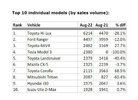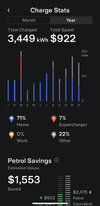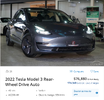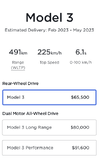Value Collector
Have courage, and be kind.
- Joined
- 13 January 2014
- Posts
- 12,263
- Reactions
- 8,524
Group 1 and 2 fit into the top end of the market - they tend to be wealthy enough to buy what they want, when they want.
Nothwithstanding that, from performance Drive comes the November sales figures from VFACTS.
View attachment 151044
The humble Toyota corrolla outsold the tesla Model Y by about 3 to 1.
One has to assume from this that the Model 3 sales were less than 1805.
I am not sure where you got the figures for the comparison of the Mdel 3's versus Camrys. perhaps it was another month.
But from the same article quoting the VFACTS sales,
View attachment 151045
At least for November, there were nearly twice as many Camry's sold as Model 3's.
Mick
Model 3 normally outsells the model Y as shown in the august numbers, but covid lockdowns a few months ago probably affect recent numbers.
The corolla sales were also triple what they were a month before, so that might be an aberration, also the corolla is a much cheaper car, you would expect the cheaper cars to easily out sell the more expensive teslas every month, but they don’t seem to.
How much does Toyota spend on marketing? In business to some extent it’s easy to “buy” sales through advertising, but if a product sells without advertising that’s a good sign.









